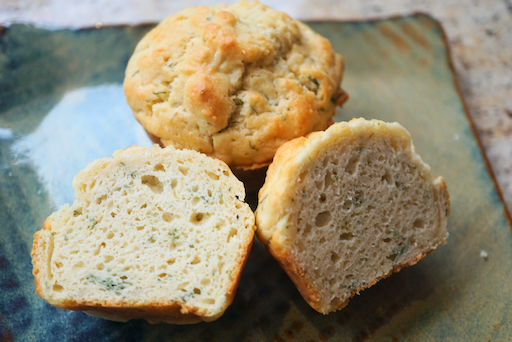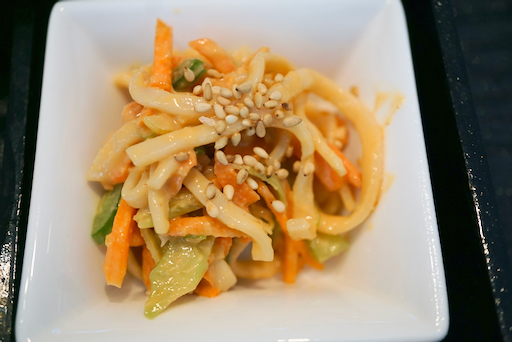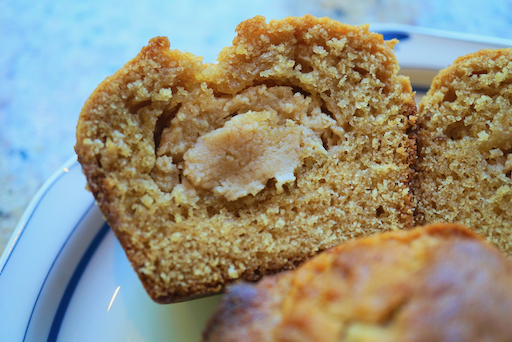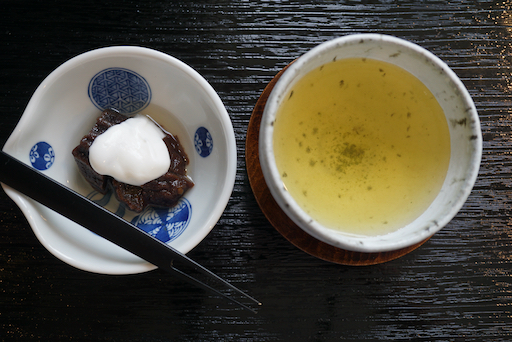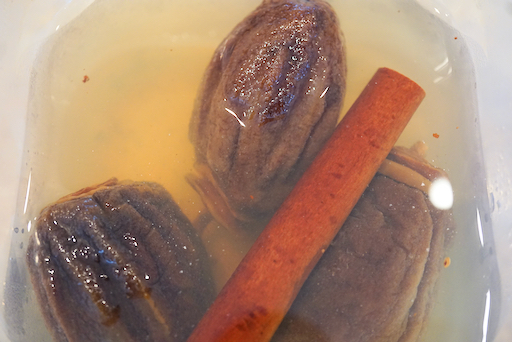One evening, we wanted to have one more appetizer to go with the cold sake we were enjoying. I remembered that we had frozen sashimi-grade salmon from Catalina Offshore products in the freezer but it was a one pound piece and would take too long to defrost. Then, it occurred to me that we could have "ruibe" ルイベ which is frozen raw salmon shaven into thin pieces to eat as a kind of sashimi. This dish is supposedly derived from the way the indigenous people who lived in Hokkaido 北海道 known as "Ainu" アイヌ used to eat salmon. Since I am originally from Hokkaido, I was familiar with this dish. In the “old” days salmon harvested in the fall could be stored frozen during the hard cold Hokkaido winter without the need for modern freezers. My understanding is that the Ainu people just shaved pieces off the frozen salmon and ate the shaved pieces. (Hopefully, the long and deep freezing in the cold Hokkaido winter was sufficient to kill the parasite endogenous to salmon making it safe to eat raw.) The salmon we had was sashimi-grade and frozen, (also from Norway ??) so it is safe to eat. Thus the only question was "Could I, in fact, shave pieces off the frozen salmon?" So I tried it using a heavy chef's knife. Amazingly, I could as shown in the next picture.
When I served this it was still frozen but quickly melting on the edges. We dipped the slices in soy sauce with wasabi. It quickly melts when held momentarily in the mouth. Initially it is crunchy ice coldness followed by the slow unfolding of fresh salmon taste; quite a unique and interestingly pleasant sensation not previously experienced elsewhere. We found this is a very good way to enjoy salmon sashimi “on the fly” without having to thaw it ahead of time.




